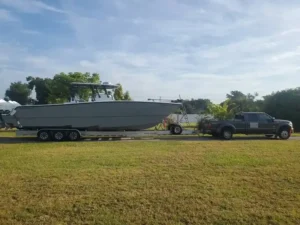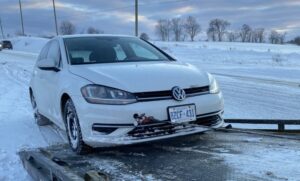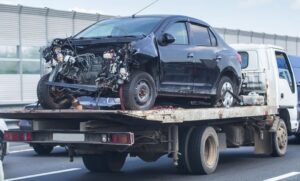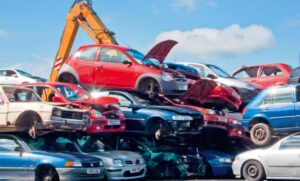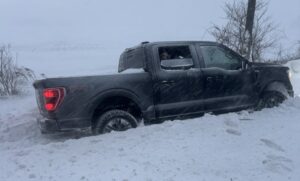In the vast expanse of Ontario, from the bustling urban centres to the serene cottage country, the need to tow a trailer—be it for work, recreation, or moving—is a common reality. For residents of Aurora and beyond, understanding which vehicles are the BEST cars for towing in 2025 is crucial for a safe, efficient, and compliant towing experience. It’s not just about raw power; it’s a complex interplay of engineering, technology, and adherence to provincial regulations.
As Pars Towing, your local experts in vehicle transport and roadside assistance, we often see the consequences of improper tow vehicle selection. This comprehensive article will delve into what makes a vehicle truly excel at towing, highlight the top contenders for 2025, and provide essential tips to ensure your towing adventures across Ontario are smooth and worry-free.
- Learn More >>>Whitby & Ajax Towing: Emergency Roadside Assistance Tips
1. What Defines the “BEST Cars for Towing”? Beyond Just Horsepower
Many assume that a powerful engine is the sole determinant of a vehicle’s towing prowess. While horsepower and torque are important, they are only part of the equation. The BEST cars for towing are engineered from the ground up to handle the immense stresses and unique demands of hauling a heavy load.
Here are the critical factors that contribute to a vehicle’s towing capability and safety:
1.1. Towing Capacity & Gross Combined Weight Rating (GCWR)
- Towing Capacity: This is the maximum weight a vehicle can safely tow as specified by the manufacturer. It’s the most advertised number, but it’s crucial to understand it’s a maximum under ideal conditions with specific configurations.
- Gross Combined Weight Rating (GCWR): This is arguably the most important, yet often overlooked, number. GCWR is the maximum permissible combined weight of the fully loaded tow vehicle (including passengers, cargo, fuel, and tongue weight) and the fully loaded trailer. Exceeding GCWR is incredibly dangerous, regardless of the advertised towing capacity.
- Payload Capacity: This refers to the maximum weight a vehicle can carry in its cabin and bed/cargo area, including the tongue weight of the trailer. A heavy tongue weight can quickly eat into your payload.
1.2. Robust Chassis and Frame
- Body-on-Frame Construction: Traditional trucks and large SUVs typically use a body-on-frame design, similar to how heavy trucks are built. This separate frame provides superior rigidity and strength for handling heavy loads and trailer forces.
- Unibody Construction: Most cars and crossovers use unibody construction, where the body and frame are integrated. While lighter and more fuel-efficient, unibody vehicles have lower towing capacities unless specifically reinforced for the task (e.g., some larger unibody SUVs with integrated hitch receivers).
1.3. Powertrain Components: Engine, Transmission, and Axle Ratio
- Engine Torque: Torque (the twisting force that gets things moving) is more critical for towing than horsepower. Diesel engines are renowned for their low-end torque, making them excellent tow vehicles. Larger gasoline V6 and V8 engines, especially those turbocharged, also deliver impressive torque.
- Transmission: A robust transmission (typically an automatic with many gears, often 8-speed or 10-speed) is vital. It needs to handle the increased heat and stress of towing. Features like “Tow/Haul Mode” optimize shift points to prevent excessive gear hunting and provide engine braking. An auxiliary transmission cooler is also a significant asset.
- Axle Ratio: This refers to the gearing in the differential. A “lower” (numerically higher) axle ratio provides more torque to the wheels, improving towing capability at the expense of slight fuel economy. Many manufacturers offer different axle ratios for towing packages.
- Learn More >>>Top 5 Reasons You Might Need a Tow Truck in Toronto
1.4. Braking System
- Larger Brakes: Heavier loads require significantly more stopping power. Vehicles designed for towing often feature larger brake rotors and more robust calipers to dissipate heat and prevent fade.
- Integrated Trailer Brake Controller: This is a crucial feature that allows the driver to control the trailer’s electric brakes from the tow vehicle’s cabin, synchronizing braking for smooth, stable stops. It’s often standard or optional on the BEST cars for towing.
- Exhaust/Engine Brake (for Diesels): Diesel trucks often feature exhaust or engine brakes that use the engine’s compression to slow the vehicle and trailer, significantly reducing wear on the service brakes, especially on long descents.
1.5. Suspension System
- Heavy-Duty Suspension: Stiffer springs and shock absorbers are necessary to manage the added weight on the rear axle (tongue weight) and maintain vehicle stability.
- Load-Leveling Suspension: Air suspension or self-leveling shock absorbers automatically adjust the vehicle’s height to compensate for tongue weight, keeping the tow vehicle level and improving handling, ride quality, and headlight aim.
- Anti-Sway Bar: A thicker rear anti-sway bar helps control body roll and improves stability when towing.
1.6. Towing Technology and Driver-Assist Features
Modern vehicles offer a suite of technologies that make towing safer and less stressful:
- Trailer Sway Control (TSC): An extension of the electronic stability control system, TSC detects trailer sway and can automatically apply individual brakes or reduce engine power to bring the trailer back in line.
- Pro Trailer Backup Assist: Ford’s innovative system allows drivers to steer a trailer in reverse using a simple knob, making a notoriously difficult maneuver much easier.
- Trailer Camera Systems: Multiple cameras provide views of the hitch, trailer sides, and even a “transparent trailer” view, eliminating blind spots.
- Trailer Light Check: A system that allows the driver to remotely test trailer lights from the cab.
- Blind Spot Monitoring with Trailer Coverage: Extends the blind spot warning system to account for the length of the attached trailer.
- Integrated Towing Package: The BEST cars for towing often come with a factory-installed towing package that bundles many of these essential features (hitch receiver, wiring, transmission cooler, upgraded cooling, heavy-duty alternator, etc.). Always opt for a factory package over aftermarket add-ons when serious towing is planned.
- Learn More >>>Porsche towing
2. Top Contenders: BEST Cars for Towing in 2025 (Canadian Market Focus)
Based on their impressive capabilities, robust engineering, and available towing features, here are some of the top vehicles likely to be among the BEST cars for towing in Canada for 2025. Please remember that towing capacities are maximums and vary significantly with configuration (engine, drivetrain, axle ratio, specific trim, and installed equipment). Always consult the manufacturer’s official towing guide for your specific vehicle.
2.1. Full-Size Pickup Trucks (The Undisputed Kings of Towing)
- Ford F-Series (F-150, Super Duty F-250/F-350): Consistently at the top. The F-150, with its Pro Power Onboard and advanced towing tech (like Pro Trailer Backup Assist), remains a segment leader for light-to-heavy duty towing. Super Duty trucks are for the heaviest loads (large RVs, heavy equipment) with their massive diesel torque and higher GVWRs. Expect capacities well into the 10,000-20,000+ lb range.
- Ram 1500 / Heavy Duty (2500/3500): Known for its comfortable ride (especially with available air suspension) and powerful engine options, including the new Hurricane inline-six. Ram trucks are formidable tow rigs. Heavy Duty models boast exceptional max towing for commercial or very large recreational needs. Expect capacities from 8,000-11,000+ lbs for the 1500 and much higher for HD models.
- Chevrolet Silverado / GMC Sierra (1500, 2500HD/3500HD): Offer a range of powerful engine options (V8s and Duramax diesels), advanced trailering systems, and reliable performance. Their maximum towing figures are competitive across all segments. Expect similar ranges to Ford and Ram.
- Toyota Tundra: A strong contender, especially with its i-FORCE MAX hybrid powertrain, offering a balance of power and efficiency. Known for Toyota’s legendary reliability. Towing capacity for the Tundra is typically over 10,000 lbs.
2.2. Large SUVs (Family Haulers with Serious Towing Chops)
- Jeep Wagoneer / Grand Wagoneer: These luxurious large SUVs lead the pack with incredible towing capacities for their class, often exceeding 10,000 lbs when properly equipped. Powered by potent twin-turbo inline-six engines.
- Chevrolet Tahoe / Suburban & GMC Yukon / Yukon XL: These body-on-frame SUVs offer robust towing capabilities, similar to their pickup truck counterparts, making them excellent for families needing to tow campers, boats, or utility trailers while carrying many passengers. Expect capacities typically in the 8,000-8,500+ lb range.
- Ford Expedition / Expedition MAX: Another top-tier choice for families, offering strong towing numbers thanks to its powerful EcoBoost V6 engine and available towing package. Often seen with capacities up to 9,300 lbs.
- Toyota Sequoia: Re-engineered with a hybrid powertrain, the Sequoia offers excellent towing figures and Toyota’s renowned reliability, making it a very capable full-size SUV for towing. Expect over 9,000 lbs capacity.
- Nissan Armada / Infiniti QX80: These V8-powered SUVs provide strong conventional towing capabilities and a comfortable ride. Capacities typically around 8,500 lbs.

2.3. BEST cars for towing & Larger Crossover SUVs (Versatile and Capable)
- Toyota Tacoma / Ford Ranger / Chevrolet Colorado / GMC Canyon: These mid-size trucks offer a good balance of maneuverability and solid towing capabilities for smaller trailers, ATVs, or compact campers. Capacities typically range from 6,000-7,700 lbs.
- Nissan Pathfinder: This popular crossover SUV offers versatile towing options, with capacities up to 6,000 lbs on higher trims, making it a strong choice for mid-size campers or recreational trailers.
- Honda Ridgeline: Unique unibody construction offers a smoother ride, and it still provides a respectable 5,000 lbs towing capacity, making it suitable for smaller boats or utility trailers.
- Hyundai Palisade / Kia Telluride: While crossovers, these popular SUVs often come with factory towing packages that enable them to tow up to 5,000 lbs, ideal for small campers or recreational gear.
- Mercedes-Benz GLE / GLS: For those seeking luxury alongside capability, many Mercedes-Benz SUVs offer impressive towing capacities, particularly the GLE and GLS, which can tow up to 3,500 kg (7,716 lbs) when properly equipped. Their electric EQE/EQS SUVs also offer around 1,600 kg (3,500 lbs) for lighter loads.
2.4. Emerging EV Towing Leaders (With Specific Considerations)
Electric vehicles are rapidly advancing their towing capabilities. While often lower than comparable gas/diesel counterparts, they offer instant torque which is excellent for getting a load moving.
- GMC Hummer EV Pickup/SUV: One of the few EVs with a truly substantial towing capacity, matching many gasoline full-size trucks, often rated for 7,500-10,000 lbs depending on configuration.
- Tesla Cybertruck: While still new to market, its advertised towing capacity is impressive, aiming for 11,000 lbs.
- Ford F-150 Lightning: Offers competitive towing for an electric truck, up to 10,000 lbs depending on battery and configuration, with clever features like Pro Trailer Hitch Assist.
- Rivian R1T / R1S: These adventure-focused EVs boast strong towing figures for their size, with capacities often exceeding 11,000 lbs for the R1T pickup and 7,700 lbs for the R1S SUV.
Crucial EV Towing Notes: Towing with an EV significantly impacts range. Always factor in reduced range, longer charging times, and the need to find suitable charging infrastructure, especially when traveling long distances in Ontario. Regenerative braking benefits are less pronounced when towing a heavy, non-braked trailer.
3. Essential Towing Accessories and Best Practices for Safe Towing in Ontario
Having the BEST cars for towing is only half the battle. Proper accessories and diligent practices are vital for safe towing on Ontario’s diverse roads.
3.1. Must-Have Towing Accessories
- Correct Hitch Receiver: Match the hitch class to your towing needs (Class I for light loads, Class V for heavy duty). Ensure it’s securely mounted to your vehicle’s frame.
- Proper Ball Mount and Ball: The ball mount must be correctly sized for your receiver, and the hitch ball must match the trailer coupler’s size and weight rating.
- Safety Chains: Always cross safety chains under the trailer tongue and attach them securely to the tow vehicle’s frame. They are a backup in case the primary hitch fails.
- Trailer Wiring Harness: Essential for connecting trailer lights (tail, brake, turn signals). A 7-pin connector is usually needed for trailers with electric brakes; 4-pin for simple lights.
- Integrated Trailer Brake Controller: Highly recommended for any trailer with electric brakes, allowing synchronized braking.
- Weight Distribution Hitch (WDH): For heavier trailers (especially travel trailers), a WDH helps distribute tongue weight more evenly across all axles of the tow vehicle and trailer, improving stability and handling.
- Sway Control Device: Can be integrated into a WDH or a standalone unit, designed to minimize trailer sway.
- Towing Mirrors: If your trailer is wider than your tow vehicle, extended towing mirrors are legally required in Ontario to provide a clear view of traffic behind you.
- Tire Pressure Monitoring System (TPMS) for Trailer: Some advanced tow vehicles offer integrated TPMS for the trailer tires, a huge safety benefit.
- Learn More >>>24 Hour Towing Near Me: Why You Need a Trusted Provider
3.2. Pre-Trip Towing Checklist
Before every journey, perform a thorough inspection:
- Tires: Check tire pressure on both tow vehicle and trailer (including spare), ensuring they are inflated to manufacturer recommendations for towing loads. Inspect for wear or damage.
- Lights: Verify all trailer lights (running, brake, turn signals, markers) are working correctly.
- Hitch Connection: Double-check the hitch ball, coupler latch, safety pin, and safety chains are securely connected.
- Trailer Brakes: Test trailer brakes (if equipped) to ensure they engage properly.
- Load Distribution: Ensure trailer cargo is evenly distributed, with appropriate tongue weight (typically 10-15% of total trailer weight for conventional towing).
- Fluid Levels: Check engine oil, transmission fluid, coolant, and brake fluid in your tow vehicle.
- Mirrors: Adjust all mirrors for optimal rear visibility.
3.3. Safe Towing Practices in Ontario
- Reduce Speed: Always drive slower than you would normally. Adhere to posted speed limits for trailers (which can be lower than general limits).
- Increase Braking Distance: It takes significantly longer to stop when towing. Maintain ample following distance.
- Wider Turns: Account for the extra length of your combined rig by making wider turns to avoid hitting curbs or obstacles.
- Be Aware of Sway: If you feel trailer sway, ease off the accelerator, apply the trailer brakes manually (if equipped), and steer straight. Do not apply the tow vehicle’s brakes sharply.
- Regular Checks: Pull over periodically to re-check all connections, straps, chains, and tire temperatures.
- Avoid Overloading: Never exceed the towing capacity, GCWR, or payload capacity of your vehicle or trailer.
- Hills: Downshift when ascending hills to maintain power, and downshift when descending to use engine braking and save your service brakes.
- Wind and Weather: High winds, rain, or snow will significantly impact towing stability. Exercise extreme caution or pull over if conditions are severe.
- No Passengers in Trailer: It is illegal and highly dangerous to carry passengers in a towed trailer in Ontario.
4. Ontario Towing Regulations: What You Need to Know
For safe and legal towing in Ontario, familiarity with the Highway Traffic Act (HTA) is essential. While this is general guidance, always refer to the latest MTO publications.
- Brakes: Trailers with a gross weight of 1,360 kg (3,000 lbs) or more must have independent brakes on all wheels. Breakaway brakes are also required on trailers over a certain weight.
- Lights and Reflectors: All trailers must have working tail lights, brake lights, turn signals, and a license plate light. Reflectors are also mandatory.
- Safety Chains: Required and must be securely attached and crossed.
- Mirrors: Your tow vehicle must have mirrors that provide a clear view of the roadway 60 meters (200 feet) to the rear. This often necessitates extended towing mirrors when a wide trailer is attached.
- Maximum Dimensions: Ontario has limits on trailer width (2.6 meters), height (4.15 meters), and overall combined length (23 meters).
- Driver’s License: A standard G license is sufficient for most recreational towing, provided the towed vehicle/trailer does not exceed 4,600 kg (10,141 lbs) and does not have air brakes. For heavier trailers or those with air brakes, a Class A or D license may be required.

5. When to Call Pars Towing: Your Reliable Partner in Aurora & Ontario
Even with the BEST cars for towing and meticulous preparation, unforeseen circumstances can arise. When they do, Pars Towing is your dependable partner in Aurora and across Ontario.
- Breakdowns While Towing: If your tow vehicle or trailer breaks down on the road, our specialized fleet can handle the recovery of both components safely and efficiently.
- Accidents: In the unfortunate event of an accident involving your tow rig, Pars Towing provides rapid response, accident recovery, and secure transport services, working with local authorities.
- Trailer Issues: Flat trailer tires, seized trailer bearings, or electrical problems with trailer lights can leave you stranded. We can assist with roadside repairs or transport.
- Overloaded or Unstable Rig: If you find your setup is unstable, overloaded, or simply not handling well, pull over safely and call us. We can assess the situation and provide safe transport.
- Peace of Mind: Sometimes, the best solution is to let professionals handle it. If you’re stressed, unsure, or simply prefer expert handling, Pars Towing is just a call away. We ensure your valuable equipment and vehicles are transported with the utmost care.
Conclusion
Choosing the BEST cars for towing in 2025 involves more than just selecting a powerful engine; it requires a holistic understanding of a vehicle’s engineering, integrated towing features, and adherence to safe practices and Ontario’s regulations. From the sheer brute force of heavy-duty pickup trucks to the refined capability of large SUVs and the growing potential of electric vehicles, there’s a capable tow vehicle for every need.
Equip yourself with the right knowledge, invest in essential accessories, and always prioritize safety on the road. And remember, for any towing emergency or transport need in Aurora and throughout Ontario, Pars Towing stands ready with expertise, state-of-the-art equipment, and a commitment to your safety and satisfaction. Drive confidently, knowing that expert help is always available.

